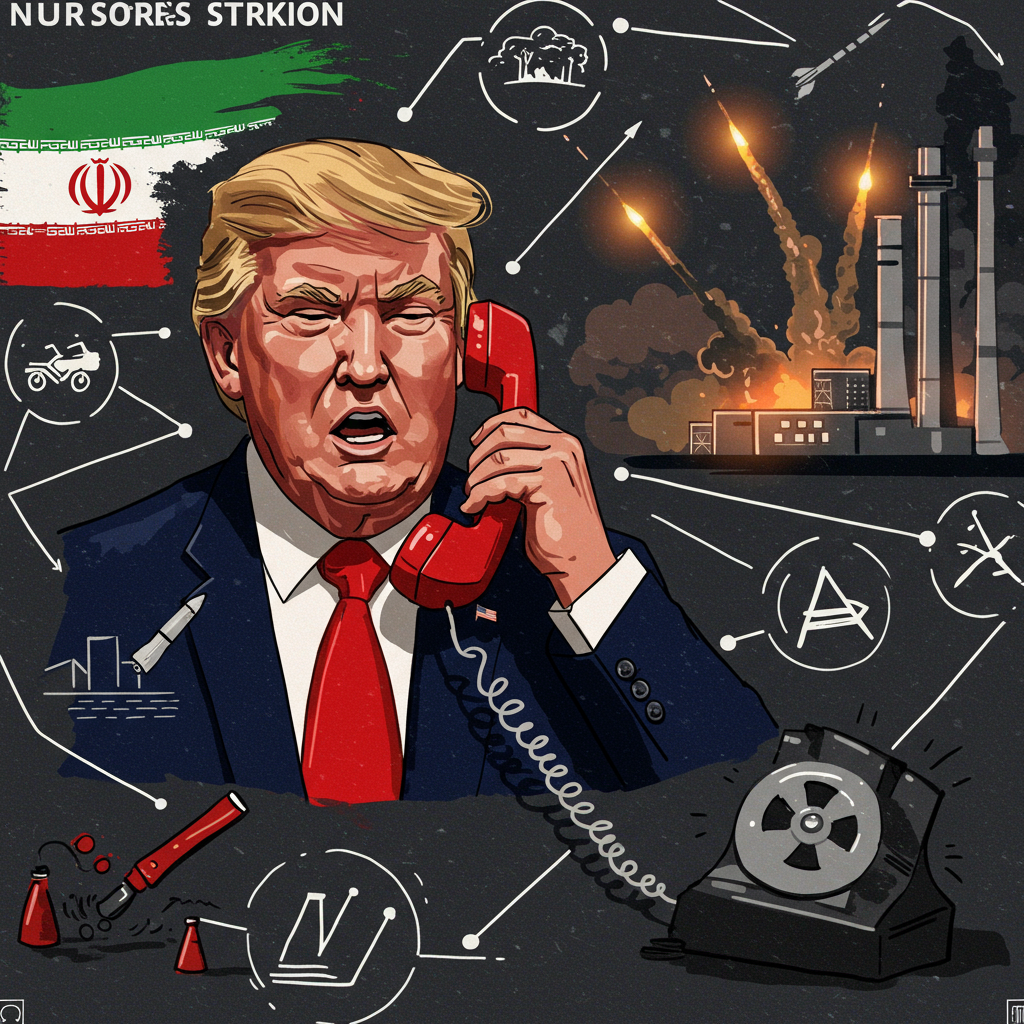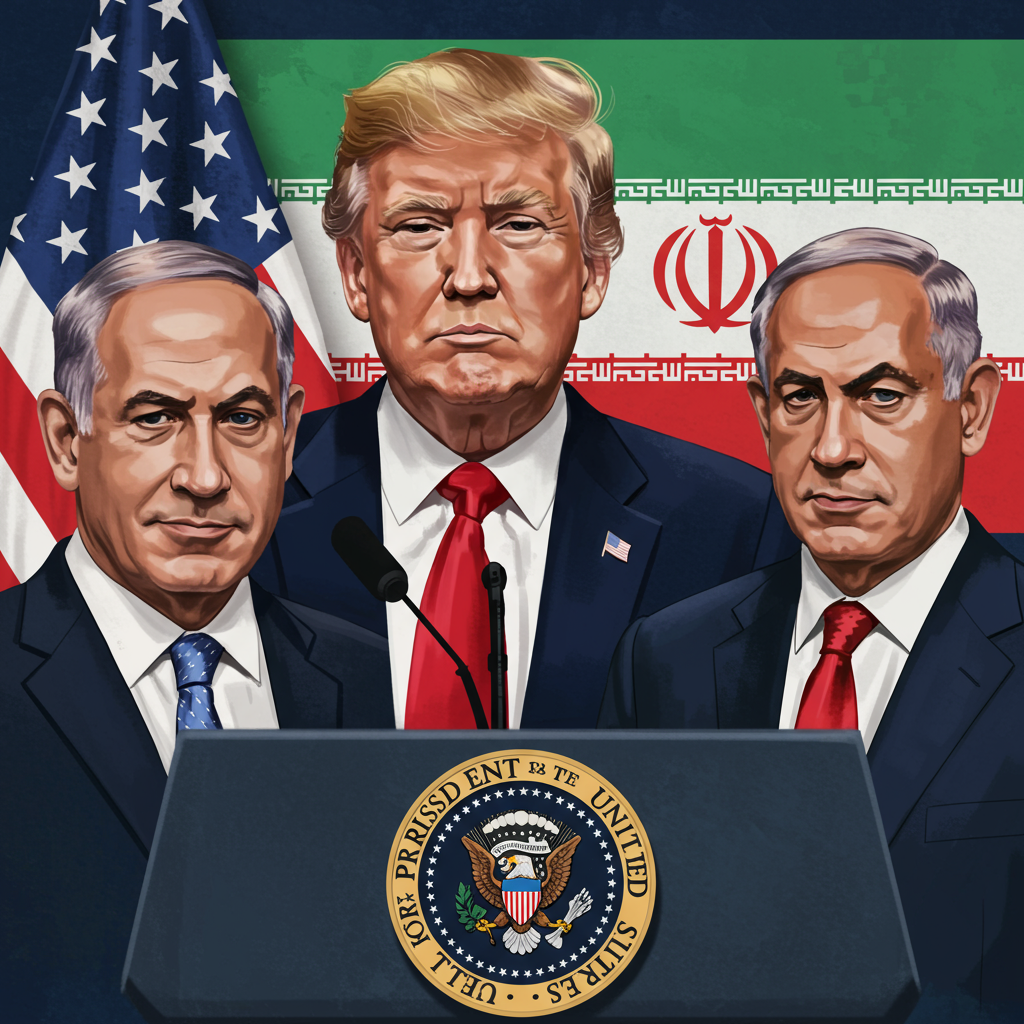Recent US military strikes targeting Iranian nuclear facilities have dramatically escalated tensions, further drawing the United States into the complex and already volatile conflict between Israel and Iran. This action, ordered by President Donald Trump, represents a significant shift in US strategy, moving away from previous diplomatic stances and directly engaging Iran militarily.
Iran Vows Retaliation as Sites Hit
Iranian officials have issued strong warnings following the attacks on Saturday, June 21. Military leaders and members of parliament vowed that the United States would face consequences for striking its nuclear sites. One military official declared, “Gambler Trump, you can start this war, but we will be the ones who end it,” signaling a readiness for prolonged confrontation. Tehran also lodged a formal protest at an emergency UN Security Council meeting, denouncing both the US and Israel for the aggression. As of the latest reports, Iran’s Supreme Leader Ayatollah Khamenei had not yet publicly commented on the strikes.
Understanding the US Operation
The US military operation was described as a large-scale air force attack specifically designed to permanently cripple Iran’s nuclear program. The targets included three critical sites:
Natanz: A key uranium enrichment facility that had reportedly sustained damage from prior Israeli actions.
Isfahan: An area believed to hold significant reserves of fissile material crucial for nuclear development.
- Fordo: Considered the most sensitive facility, deeply buried within a mountain, making it a challenging target.
- <a href="https://www.lemonde.fr/en/international/article/2025/06/22/us-attacks-iran-thrusting-middle-east-war-into-total-uncertainty67426014.html”>www.lemonde.fr
Led by President Trump, the decision to greenlight these strikes was characterized by some as a “historic risk,” particularly as it was reportedly undertaken without congressional authorization and represented a path predecessors had avoided. Reports indicate that B-2 bombers were deployed to the region for the mission.
Following the operation, President Trump announced on social media that it was a “very successful attack,” claiming all aircraft were out of Iranian airspace after dropping a “full payload of BOMBS” on the Fordo facility. Further details emerged, suggesting that specifically six GBU-57 bunker-buster bombs, each weighing over 13.5 metric tons, were directed at the deeply fortified Fordo site.
Assessing the Impact: Obliterated or Just Damaged?
While President Trump initially claimed US bombers had “obliterated” the three Iranian nuclear sites and even alluded to the potential for regime change in Iran, military officials in both Israel and the US are still conducting assessments. The full extent of the damage inflicted and how significant a blow it truly dealt to Tehran’s overall nuclear capabilities remains under evaluation.
Israel-Iran Conflict Enters Second Week
The US strikes occur amidst an intensification of the long-standing shadow war between Iran and Israel, which has now entered its eleventh day of open hostilities. Both nations have continued to exchange strikes across the region. Early on Monday, Iranian state-affiliated media reported that Israel had targeted a large military complex within Iran. The volatility of the situation was underscored in Israel when a CNN team was forced to seek shelter during a missile warning, highlighting the direct threat faced by civilians and personnel on the ground.
Future of US Involvement Uncertain
Top officials within the Trump administration have attempted to distance the US from a full-blown war, insisting that the nation is not at war with Iran. However, President Trump himself issued a stark warning, stating that the US could launch more attacks if Tehran fails to “make peace,” leaving the door open for further military action. The US intervention has undeniably thrust the Middle East war into a state of total uncertainty, with the potential for further regional escalation looming large. The action appears to have met Israeli expectations and is seen by some as presenting a potential opportunity for a significant shift in the region’s power dynamics.


